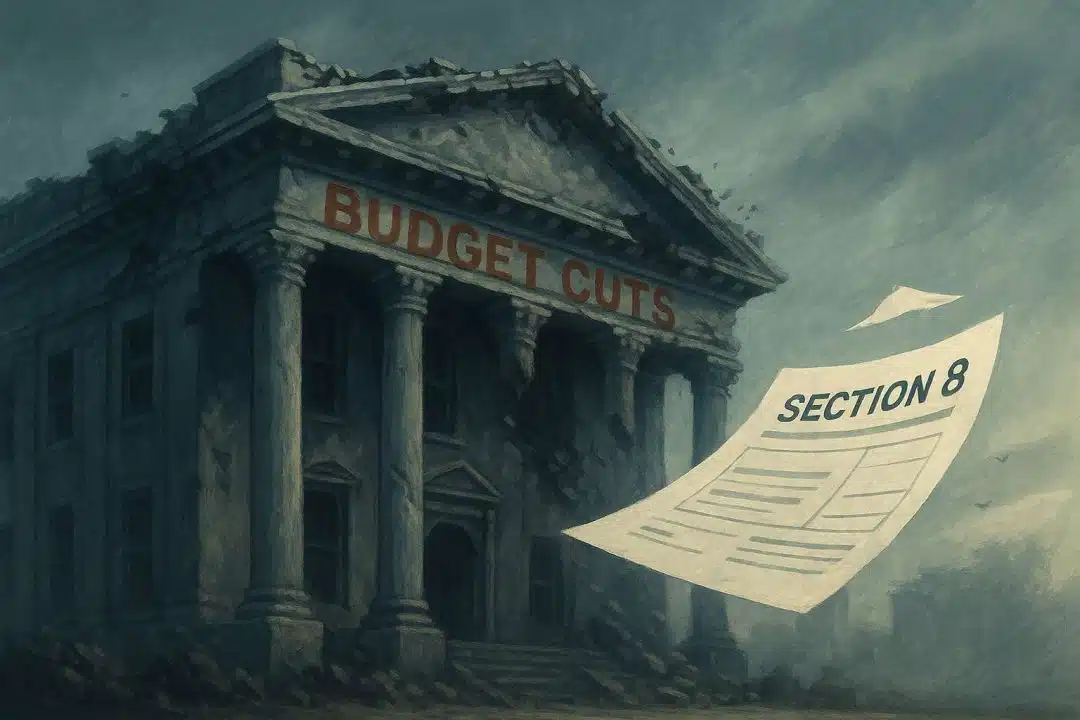
Millions of Americans who rely on Section 8 housing assistance could soon face major changes. Under the Trump administration’s 2025 budget proposal, the Department of Housing and Urban Development (HUD) would see a $26.7 billion reduction in funding for rental assistance programs—a 43% cut from current levels.
Here’s everything you need to know about how these proposed changes could impact you.
What is Section 8 housing?
Section 8, officially known as the Housing Choice Voucher Program, provides rental assistance to about 2.3 million low-income households nationwide. The program helps eligible families, older people, and people with disabilities afford safe, stable housing by subsidizing a portion of their rent.
Demand for vouchers consistently exceeds supply, leading to long waiting lists in most areas.
What changes are proposed for Section 8 in 2025?
The 2025 budget proposal includes several major changes:
- $26.7 billion in funding cuts to HUD rental assistance programs, including Section 8.
- New time limits: Able-bodied adults without disabilities would be limited to two years of assistance.
- Shift to state control: Federal rental assistance would move to state-administered block grants, allowing states to set their own eligibility rules and benefit levels.
If enacted, these changes would dramatically reshape how housing aid is distributed across the country.
How would the cuts affect current Section 8 voucher holders?
Current voucher holders could face:
- Reduced funding for vouchers, leading to lower subsidies or loss of support.
- Increased wait times for renewals.
- Stricter eligibility reviews at the state level.
Some states may continue to fully support voucher programs, while others could impose tighter restrictions or eliminate benefits for certain groups.
How would the cuts affect new Section 8 applicants?
For those trying to access Section 8 housing for the first time, the outlook could be even more challenging:
- Fewer available vouchers.
- Longer or permanently closed waiting lists.
- Varying rules depending on the state, creating a fragmented system across the country.
States with smaller housing budgets could limit eligibility to the highest-need applicants only.
Which groups are most at risk?
The proposed changes could disproportionately impact:
- Low-income families with children.
- Older adults living on fixed incomes.
- People with disabilities.
- Single adults without dependents who are currently eligible but may lose access under new time limits.
What happens next?
The budget proposal must still pass through Congress. Lawmakers are expected to propose amendments, and negotiations over funding levels could take several months.
Housing advocates are urging the public to contact their representatives and raise concerns about the potential impact on vulnerable populations.
What can you do if you rely on Section 8?
If you currently receive Section 8 assistance or are on a waiting list, experts recommend:
- Contacting your local housing authority to stay updated on potential changes.
- Monitoring HUD announcements and updates from advocacy organizations.
- Reaching out to your representatives to voice your opinion about proposed cuts.
- Exploring state and local rental assistance programs as backup options.
Helpful Resources
- HUD Housing Choice Voucher Program
- National Low Income Housing Coalition
- Find Your Local Housing Authority
